
ASRock Goes Braswell: Eight SKUs including DC-In Variants
In the wake of the news regarding ASUS’ listing of their Braswell motherboards, both ASRock and MSI have been quick on their heels to also list their model lines. ASRock contacted us directly, stating that they will have eight boards on offer in total, although markets for each will vary. They will also transition directly from the Bay Trail-D line, allowing for a quick drop in where required:
Where Bay Trail’s three SoCs, the D1800, Q1900 and Q2900, come into play will be a direct lift into Braswell with the N3050 taking the D1800, the N3150 taking the Q1900 and the N3700 for the Q2900. Personally I preferred the D/Q naming.
For a direct SKU-to-SKU comparison, the N3xx0M boards are microATX, featuring full length DDR3 and a full sized PCIe 2.0 x16 slot (although it will be limited in bandwidth to x1 due to the SoC). The audio codecs between the boards are split with the ALC887 on some and the ALC892 on others, although it is Realtek RTL8111GR across the board for network connectivity. Similarly all boards have SATA 6 Gbps, but some will have two and others will have four. The two SKUs at the end (N3150DC-ITX and N3150TM-ITX) are also capable of being powered by a 19V DC-In on the rear panel, with the final one also supporting LVDS.
What is interesting about the Braswell system list here is the issue surrounding soldered down processors. Rather than have one micro-ATX motherboard and put in the processor you need, we get three different motherboards (N3700M, N3150M and N3050M) that look identical down to the traces on the board but can perform differently. It means that should any of the big CPU players decide to have a non-socketed architecture (remember rumors surrounding Broadwell?) then we would end up with a lot more motherboards on the shelf that look exactly the same, except the processor under the hood.
We’ve asked for a set of the micro-ATX sized boards (and a Q2900) to see how Braswell performs compared to our previous Bay Trail testing. Also, because I feel like sticking in a $70 to $570 discrete graphics cards into one of these and see just how far CPU scaling can go.
Launches of these motherboards will be region dependent, although I have heard from other companies that Braswell isn’t necessary going to be a big launch, and potentially small volume due to the mini-PC space which is consuming more of the point-of-sale types of systems that desktop Atom used to have.
Source: ASRock
Read More ...
NVIDIA To Give Away The Witcher 3 To GTX Titan X Owners Who Participate in Software Beta
When NVIDIA announced their most recent GeForce game bundle, notably absent was the GTX Titan X. With Titan products typically uncontested in holding the performance crown and priced as a luxury product, NVIDIA rarely has a need to offer game bundles with the flagship cards. For that reason, the latest revelation from NVIDIA has come as a bit of a surprise.
Effective immediately, NVIDIA is going to be bundling The Witcher 3 with the GTX Titan X in a roundabout manner. Furthermore this offer applies to both new and existing GTX Titan X owners, so those buyers who have picked up GTX Titan X cards in the last two months are eligible for a post-purchase freebie, making this one of the only other cases of a retroactive bundle.
So how does all of this work? Officially NVIDIA is offering copies of the game not with the purchase of a GTX Titan X, but rather as an incentive for participating in a software beta test. The software being beta tested? A new feature to redeem game codes through GeForce Experience, with The Witcher 3 being the first product to use the system.
In any case, since the beta is open up to all GTX Titan X owners, this ends up being a de facto retroactive game bundle for the card, as the promotion covers all current cards and runs for the next month, through June 19th. As for NVIDIA’s motivations, while I don’t doubt that this is in part a serious effort to beta test the new redemption system, at the same time it’s a back-door method of launching a game bundle for their $1000 flagship card without making their existing customers irate. With AMD making their own waves today, it’s certainly an interesting coincidence.
Anyhow, GTX Titan X can find the full program details over at NVIDIA’s website. The promotion page includes detailed instructions on how to collect the Witcher 3 code through the system, and activate it through GoG and NVIDIA’s redemption system.
Finally, the fact that NVIDIA is testing a new redemption system signals an interesting shift in how future game bundles may work. While NVIDIA has not commented on this bundle so far – in fact they haven’t even announced it on GeForce.com yet – I suspect what we’re looking at is a beta test for how NVIDIA intends to distribute all bundles in the future. A distribution system through GeForce Experience not only increases the user base for that software, but more importantly it smooths over some of the logistics of bundling games. Retailers would no longer need to distribute vouchers, and based on NVIDIA’s description of how the bundling system works, it looks like this could shut down the grey market for reselling bundle redemption codes as well.
Read More ...
Apple Announces 2015 15” Retina MacBook Pro, Cheaper 27” Retina iMac
This morning Apple announced the release of the 2015 refresh of their 15” Retina MacBook Pro lineup. With the 13” rMBP having been updated with an Intel Broadwell processor back in March, we were expecting a similar update for the 15” model around this timeframe, however as it turns out Apple will be sticking with Haswell just a bit longer. Let’s jump into the specs.
| 15" Retina MacBook Pro Lineup | ||||||
| Model | 2014 (base) | 2014 (high-end) | 2015 (base) | 2015 (high-end) | ||
| Dimensions | 0.71 inch (1.8 cm) x 14.13 inches (35.89 cm) x 9.73 inches (24.71 cm) | |||||
| Weight | 4.46 lbs (2.02 kg) | 4.49 lbs (2.04 kg) | ||||
| CPU | 2.2GHz Core i7-4770HQ (Haswell) |
2.5GHz Core i7-4870HQ (Haswell) |
2.2GHz Core i7-4770HQ (Haswell) |
2.5GHz Core i7-4870HQ (Haswell) |
||
| GPU | Intel Iris Pro | Intel Iris Pro + GeForce GT 750M (2GB) | Intel Iris Pro | Intel Iris Pro + Radeon R9 M370X (2GB) | ||
| Display | 15" 2880 x 1800 IPS LCD | |||||
| Memory | 16GB DDR3L | |||||
| SSD | 256GB PCIe SSD (PCIe x2) | 512GB PCIe SSD (PCIe x2) | 256GB PCIe SSD (PCIe x4) | 512GB PCIe SSD (PCIe x4) | ||
| Battery Capacity | 95 Wh | 99.5 Wh | ||||
| Battery Life | 8 Hours | 9 Hours | ||||
| Price | $1999 | $2499 | $1999 | $2499 | ||
As far as the overall design goes, based on Apple’s specifications it does not look like the chassis has been updated in any way. The 15 rMBP’s dimensions are identical - it’s still 0.71” (18mm) thick – though the weight has gone up very slightly from 4.46lbs (2.02kg) to 4.49lbs (2.04kg). Nor have the ports changed, with a combination of USB 3.0, Thunderbolt, MagSafe 2, and not a Type-C port in sight.
However on the input side of matters the Force Touch trackpad, first introduced on the MacBook and 2015 13” rMBP, has finally made its way over to the 15” model. In the case of the MacBook Pro Apple isn’t looking to save space in the same manner as they were the MacBook, but rather the Force Touch trackpad represents the next generation of trackpads for the company thanks to its pressure-sensitive touch and the additional input options that unlocks.
Meanwhile on the inside, much to our surprise the processor situation remains unchanged. Apple has confirmed that the 15” rMBP continues to use Intel’s Haswell processors and not their newer Broadwell processors, and as a result the processors available for the 2015 15” rMBP are identical to the 2014 processor options.
Since the processors have not changed, this also means that the 2015 models offer the same Iris Pro-equipped CPUs across the entire 15” lineup, with all models including the 40EU Iris Pro 5200 GPU. On the other hand the optional discrete GPU for the rMBP has changed; it is now AMD’s just-introduced Radeon R9 M370X, which ships with 2GB of VRAM. Unfortunately we know very little about M370X at this time – AMD’s closest part we do have specs for is the Cape Verde based M375 – so at the moment we’re unsure if this is another Verde part or if it’s something else entirely.
Elsewere, on the storage side of matters the SSDs have seen a slight upgrade. Just like the 13" rMBP earlier this year, the new 15" rMBP is now using a wider, PCIe x4 SSD. This will double theoretical maximum through, though the actual performance impact remains to be seen.
The final notable change here is that both battery capacity and battery time have gone up. Battery capacity is now up to 99.5 Wh, up from 95 Wh in 2014. It will be interesting to see the first rMBP tear-down, to see if this comes from different battery chemistry or improved space utilization to allow a physically larger battery. In either case, battery life is now speced for 9 hours for both web browsing and video playback, up from 8 hours on the 2014 model. A whole additional hour on just a slightly larger battery may be a bit optimistic, especially if Apple hasn’t made any other power savings changes.
Retina iMac
Meanwhile the Retina iMac has also received a partial upgrade, with Apple realigning their SKUs. The big news here is that Apple has shoved the non-Retina 27” iMac into a corner, and now offers 2 27” configurations with Retina.
| 27" Retina iMac | ||||
| Model | 2015 (base) | 2015 (high-end) | ||
| CPU | 3.3GHz Core i5-4590 (Haswell) |
3.5GHz Core i5-4690 (Haswell) |
||
| GPU | AMD Radeon R9 M290 (2GB) | AMD Radeon R9 M290X (2GB) | ||
| Display | 27" 5120 x 2880 IPS LCD | |||
| Memory | 8GB DDR3 | |||
| Storage | 1TB 7200RPM HDD | 1TB Fusion Drive | ||
| Price | $1999 | $2299 | ||
The new $1999 base model is essentially a slightly cut down version of the original model launched late last year, and comes equipped with a 3.3GHz Intel Core i5-4590 processor, 8GB of RAM, a 1TB hard drive (no Fusion Drive on the base model), and a Radeon R9 M290 for graphics. Meanwhile the original Retina iMac is unchanged in configuration and is now the high-end option for the iMac. At the same time its price has been brought down $200, from $2499 to $2299.
Read More ...
AMD Dives Deep On High Bandwidth Memory - What Will HBM Bring AMD?
Earlier this month at AMD’s 2015 Financial Analyst day, the company announced that they would be releasing their first High Bandwidth Memory-equipped GPU – the world’s first HBM-equipped GPU, in fact – to the retail market this quarter. Since then there have been a number of questions of just what AMD intends to do with HBM and just what it means for their products (is it as big of a deal as it seems?), and while AMD is not yet ready to reveal the details of their forthcoming HBM-equipped GPU, the company is looking to hit the ground running on HBM in order to explain what the technology is and what it can do for their products ahead of the GPU launch later that quarter.
Read More ...
Ruckus Unifies Product Platforms under SmartZone Umbrella
The enterprise Wi-Fi market has been growing at a tremendous rate, thanks to the proliferation of smart wireless devices (even in business settings). There are many vendors targeting the enterprise WLAN space Ruckus Wireless, Aruba Networks and Ubiquiti Networks are examples. We talked briefly about Ruckus Wireless when we covered the launch of their cloud-based WLAN management service last year.
Till now, Ruckus has had different product lines for different market segments - small business, medium-sized enterprises, large scale enterprises and carrier-grade infrastructure. However, as the number of WLAN clients for a given system increases, the traditional market delineation makes it difficult for customers to choose the correct product. In order to solve this problem, Ruckus is introducing an umbrella 'SmartZone' platform which allows their customers to easily upgrade the infrastructure to meet future requirements ('Wi-Fi as you grow').
The new Ruckus SmartZone has a single-pane software interface for different deployments (on-premises single controller, clustered controllers as well as virtualized WLAN controllers). These can scale from one up to 300K devices. In terms of hardware offerings, we have the SmartZone 100 WLAN Controller, each of which can support up to 25K clients and 2048 WLANs, with up to 10 Gbps data throughput. Each can manage up to 1000 Ruckus ZoneFlex Access Points and a cluster can have up to three units.
Ruckus is also supporting virtual SmartZones (vSZ) for easy scaling and flexibility with software-defined networking (SDN) and support for network functions virtualization (NFV). The vSZ can support up to 30K APs and 300K clients. Rounding up the SmartZone platforms is the Ruckus SmartCell Gateway SCG-200. By integrating 3GPP gateway functions along with WLAN controller duties, the SCG-200 can help carriers to integrate Ruckus WLANs into their existing mobile networks. Wi-Fi is being talked about as a credible solution for congested mobile network cells, and the SCG-200 targets that market trend.
The SmartZone 100 has a MSRP of $4995 (for the 1 Gbps throughput model), while the vSZ licenses will go for $995 for each deployed instance. Each ZoneFlex AP attached to either carries an additional $100 license fee.
Read More ...
China's Alibaba Plans Posh Conference to Promote Women Entrepreneurship
Attendees include Alibaba executives, many Chinese female executives, Jessica Alba and Arianna Huffington
Read More ...
Can id Software's Doom Find Its Way Out of a 7+ Year Development Hell?
With John Carmack gone and with few familiar faces at id Software, "Doom 4" appears to be getting back to its roots
Read More ...
LG G4's International Rollout Begins; Pint-Sized G4c, High-End G4 Stylus Trot Out
New models complement existing pure touch edition of the LG G4
Read More ...
Available Tags:ASRock , NVIDIA , GTX , Apple , MacBook , AMD , LG ,

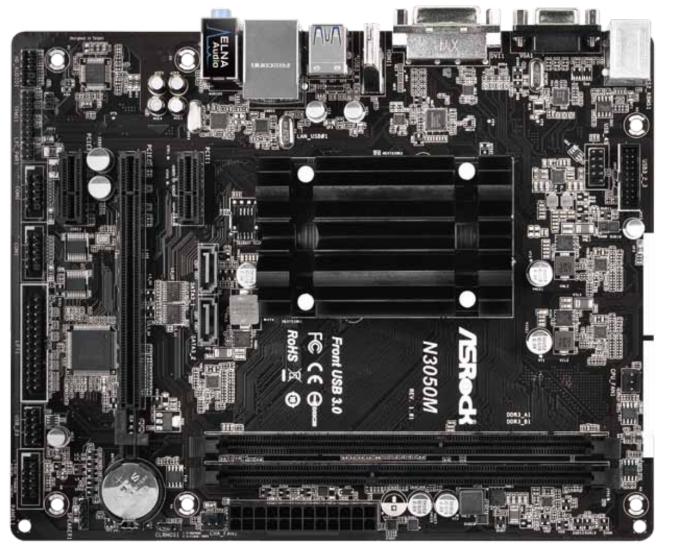




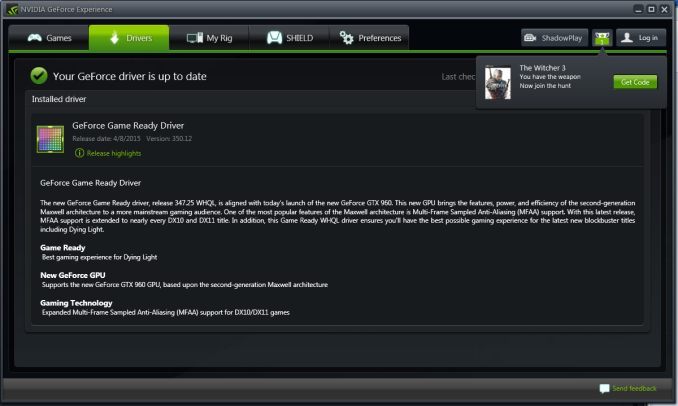
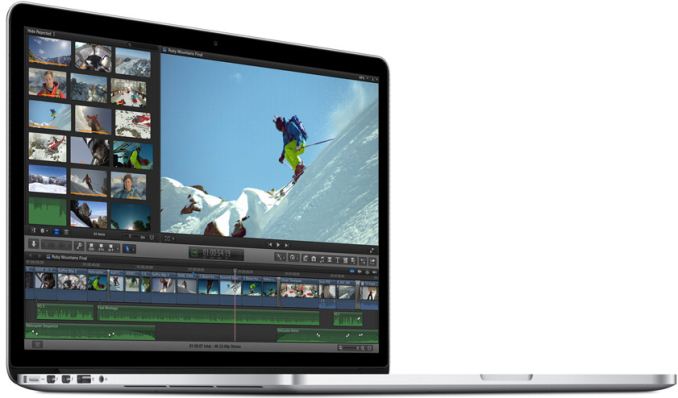
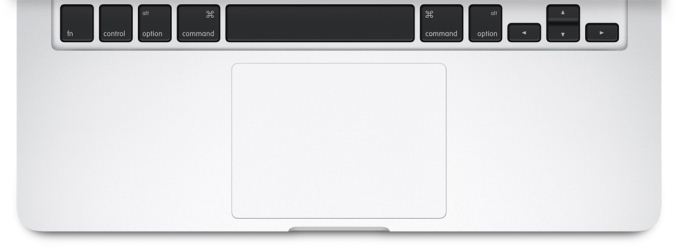
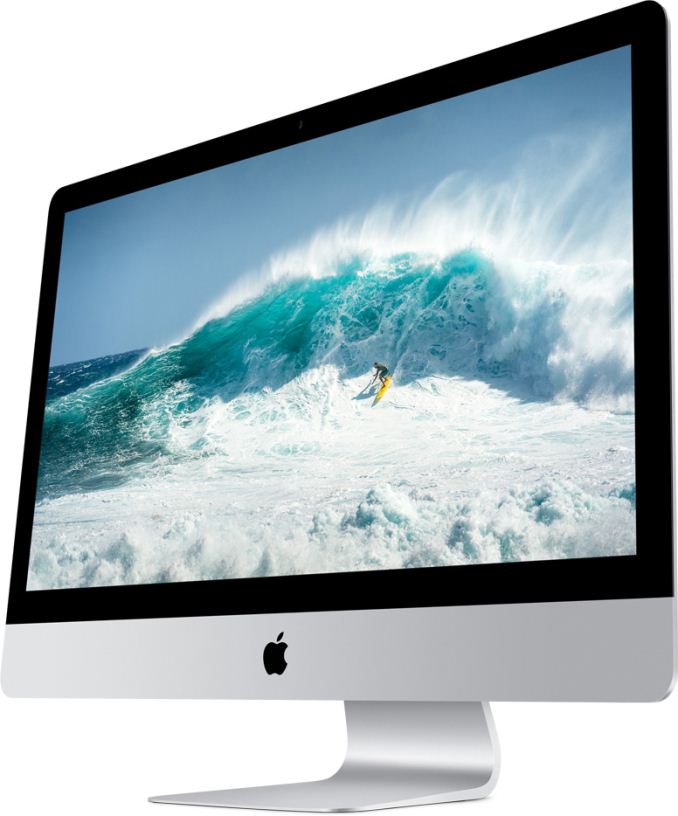

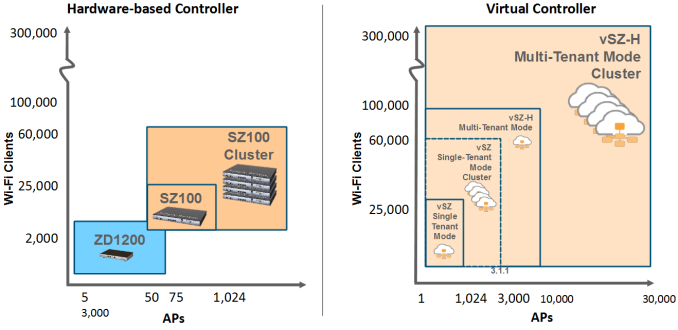
No comments:
Post a Comment